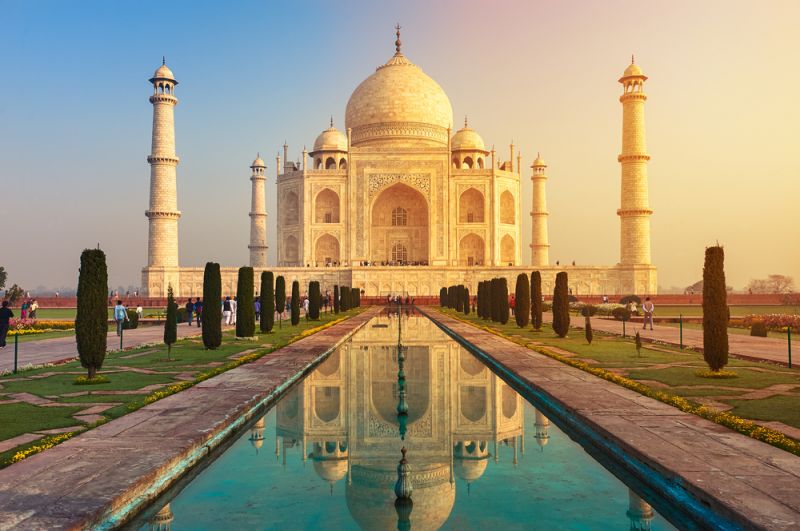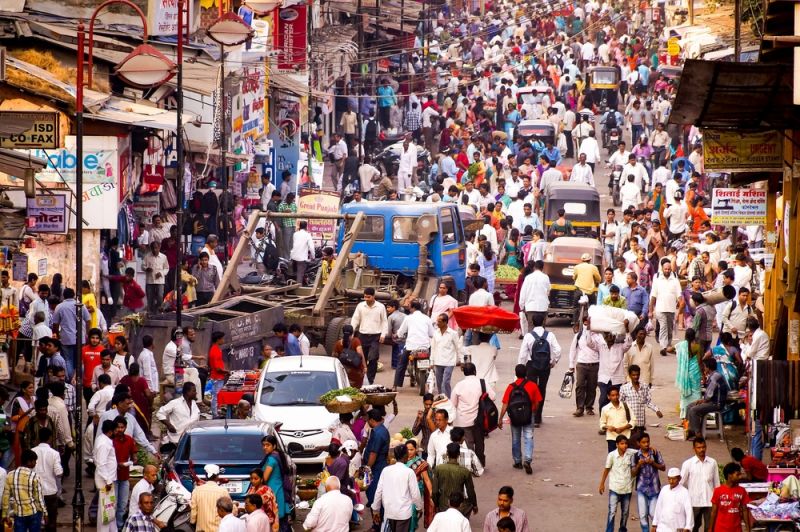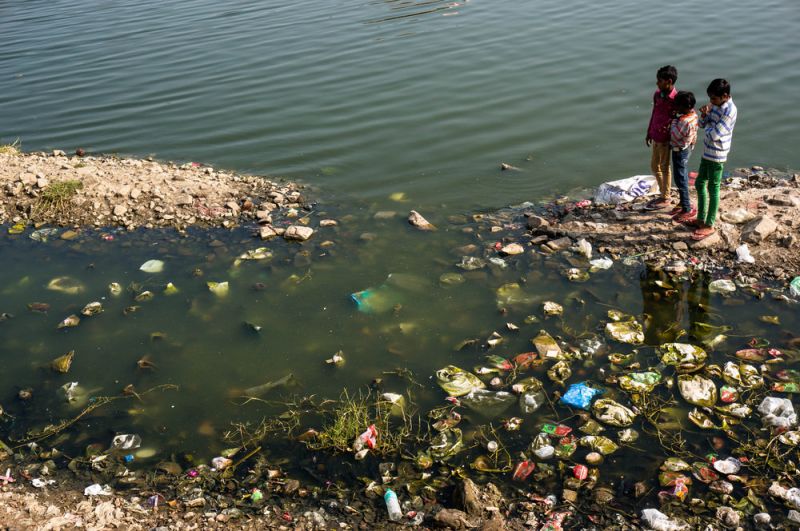The Water Crisis In India: Everything You Need To Know - Business Connect World
Published on by John Hawthorne in Non Profit
When contemplating our world’s most precious resources, past conversations often centered around fossil fuels and the consequences once those become scarce.
However, recent times have given us an abundance of alternative energy options and new technologies either in use or on the horizon. These innovations have turned the conversation to a resource that, on a basic level, is readily abundant and covers two-thirds of the earth’s surface.
Water.
More specifically, freshwater.
Though 70% of the earth is covered in water, only 2% of it is fresh. Further complicating the issue is that 1.6% of that freshwater is contained in glaciers and polar ice caps.
Many third world and developing countries struggle with ensuring this basic tenant of our existence is both available and safe. Nowhere is this more apparent than India.
 A Major Lack of Resources
A Major Lack of Resources
With the planets second largest population at 1.3 billion, and expectant growth to 1.7 billion by 2050, India finds itself unable to serve the vast majority of that populace with safe, clean water.
Supporting 16% of the world’s inhabitants is daunting enough, but it is even more so when recognizing that population is crammed into an area one-third the size of the United States. Then consider that India only possesses 4% of the world’s fresh water and the crisis can be more fully realized.
India may not be the only nation in this predicament, but theirs is at a stage more critical than most. Severe lack of regulation, over privatization, general neglect and rampant government corruption have led to multiple generations thirsting for more than just a few drops of hazard free water.
The situation has grown to the point that regional disputes have risen over access to rivers in the country’s interior. Those disputes take on a global scale in conflicts with Pakistan over the River Indus and River Sutley in the west and north and with China to the east with the River Brahmaputra.
Surface water isn’t the only source reaching a breaking point.
Tracing back several generations, the critical situation in India can be linked to a myriad of causes. In modern times though, the concern has moved from the surface to the ground. And it’s there where India’s freshwater is under the greatest stress.
Causes: Groundwater and A History of Indifference
Over the past 50 years, policies have allowed what amounts to a free-for-all in groundwater development and as the crisis has grown it has been met with continued neglect, mismanagement and overall indifference.
Estimates put India’s groundwater use at roughly one-quarter of the global usage with total usage surpassing that of China and the United States combined. With farmers provided electricity subsidies to help power the groundwater pumping, the water table has seen a drop of up to 4 meters in some parts of the country. This unfettered draining of groundwater sources has accelerated over the past two decades.
With the aggressive pumping, particularly in rural areas, where agriculture provides the livelihood for upwards of 600 million Indians, Mother Nature is often the difference in a good year and a devastating one. Relying on monsoon rains without proper irrigation or water management techniques has been a recipe for disaster.
Mismanagement and corruption often draw the largest headlines, but many of India’s leaders have also been slow or unwilling to adapt to newer technologies or cohesive plans to address the issues.
The response can at best be described as irresponsible. Consider China, a country with roughly 50 million more people, uses a quarter less freshwater.
 Growing Demand, Declining Health
Growing Demand, Declining Health
Not only is India the world’s second most populated country, but it has a fast growing middle class that is raising the demands on clean, safe water. Then consider close to half of the country practises open defecation and you have a dichotomy of two very different populations desperately pulling at the same limited resource.
One group wanting to grow and flourish and the other wanting to survive.
A few numbers from the World Bank highlight the plight the country is facing:
- 163 Million Indians lack access to safe drinking water
- 210 Million Indians lack access to improved sanitation
- 21% of communicable diseases are linked to unsafe water
- 500 children under the age of five die from diarrhea each day in India
More than half of the rivers in India are highly polluted with numerous others at levels considered unsafe by modern standards. The waters of the Yamuna, Ganga and Sabarmati flow the dirtiest with a deadly mix of pollutants both hazardous and organic.
Aside from commonplace industrial pollution and waste, India’s rivers are open use across much of the country. From dumping human waste as previously noted to bathing to washing clothes, the human element contributes to the epidemic of health related concerns.
Adding to the human toll is the reliance on seasonal rains, which are often sporadic in some years and over abundant in others. Rain totals can vary greatly and do not always arrive in the places they are needed most. The drought and flooding that results from this inconsistent cycle often leads to crop failures and farmer suicides.
Much of the above affects rural citizens where poverty is rampant, but even more developed urban areas face their own challenges.
Even with a robustly growing middle class, when combining rural and urban populations, over half of India still lives at or below the poverty level. Furthermore, no city in India can provide clean, consumable tap water full-time.
Should the crisis continue unabated, the scarcity of water will have a negative impact on the industrial health of the country.
Recent drops in manufacturing jobs can be tied to companies being unable to access clean water. Along with the inability to properly cultivate agriculture areas and the water crisis quickly becomes an economic one.
 Look to the Future
Look to the Future
It may seem a foregone conclusion that the water will soon enough dry up and along with it India as a whole. That need not be the case.
There are even bright spots in the current environment. The Rivers Narmada and Chamabal run clean with water fit for consumption. Several projects are currently underway that aim to move water to areas that need it the most.
But it will take a long-term commitment of the Indian government not previously shown and the heavy assistance of outside resources.
Common sense practices and training will also aid in reducing the damage done to groundwater sources. Teaching farmers updated irrigation techniques, such as drip irrigation, and utilizing more rainwater harvesting are small, effective steps in stemming the loss of freshwater sources.
Much of India will also need modern sanitation policies that both conserve and wisely utilize water sources. Recognizing physical and economic growth directly ties to the amount of safe, usable water is another step in right direction.
Conclusion
Yes, all of these changes take the long view, but a crisis of this magnitude will not be solved with lip service and short sided solutions.
However daunting, the goals are not unattainable. India is still a developing society, and there is time to reverse the crisis that has been decades in the making.
Given the right commitment and dedication, India can soon enough have safe, clean water.
by John Hawthorne
Attached link
https://businessconnectworld.com/2018/01/11/water-crisis-in-india/Media
Taxonomy
- Public Health
- Water Security
- Freshwater
- Water Supply
6 Comments
-
Good day John.
Thank you for this article on Water as a crucial issue, in this case focusing on a fascinating nation of surging energy and immeasurable potential.
You mention the 'dichotomy of two very different populations pulling in different directions'. That may well be the greatest understatement of the article. The vantage point of some prevents them (or threatens them) from seeing what is plain and obvious to others. Therein lies the inertia.
The genius of addressing any situation in India at national level may be to conceive solutions that will benefit the majority, preferably not excluding or prejudicing other key and valid interests, and then convince the myriad players to move in the same direction. Otherwise each individual and group will go on using their own initiative and energy - as they do - to carve out a living in the face of indifference and opposition.
God bless India
-
Dear John,
You have done a wonderful job in describing the present situation with regard to water and land and its various uses. I have been working in these fields for the past 65 years with the government and also with international organisations. I have been giving advice and also getting some of it implemented while in the government at the state level and the national and international level. The worst conditions have been created in the past 20 years by wasting, misusing and polluting water along with land used for various purposes including agriculture, forests urbanisation, industries and infrastructure. The situation is rather bad but still restorable it for the socio-economic benefits of 1.7 billion people expected by 2050. Your conclusion is very correct there is no sense in being panicky. Some of the factors along with the determination can achieve this task even at this late stage.
1. In the past 3 years new thinking has started but the mindset change from the previous century to the new century, has to go much further for the use of new planning, technology and further research work.
2. Till about the 80s of the last century, people of various professionals used to work as a team to get a balanced development, for efficient use of land and water economically. Now the professionals are well focused on their special issues and due to reduced, land and water for various uses have setup unrelated targets for the future. Thus, a balanced development is not taking place.
3. Regulation of land and water which is not happening, has to be introduced after determining the holistic picture for various requirements for the whole nation by 2050.
4. A separate autonomous monitoring arrangement for land and water use on a regular basis with operation, maintenance and management has to be put in place.
-
Dear John,
Thanks for sharing your views on facts. You have hinted water sharing conflict between Pakistan and India over Indus and raised issues over Brahmaputra between India and China. You have missed water sharing conflicts between Nepal and India and Bangladesh and India. I would prefer to cite as Indian crooked policies towards Nepal and Bangladesh in Water resources. Though Nepal, due to undulated topography, is facing acute shortage of drinking water and non-monsoon irrigation, possessed huge amount of fresh water. Indian can change their policy and can invest in Nepal to store water in Nepal for their use in lean period.
-
Dear John, Thanks for your kind inputs. I agree with your views but In India focus should be on Water Literacy & Public Education with public particepation. well keep educating us.
-
Hi John: regardless of how badly man has made a mess of things. Nature already has the answer. Excuse my over simplifying. You would like, more water, clean water, eliminate/recycle all trash, return nutrients back to the soil, increase the nutrient density and crop yield without using chemicals. Also I think you might be interested in a little free energy. If you are really tired of the lip service from the UN or any government agency just let me know. My skype is guy_mcgowen .
-
Dear Mr. John,
Thanks for your interesting and useful post. Many cities face water crisis.
What is the strategy for solving water crisis?
Regards,
F H Mughal